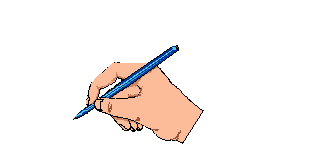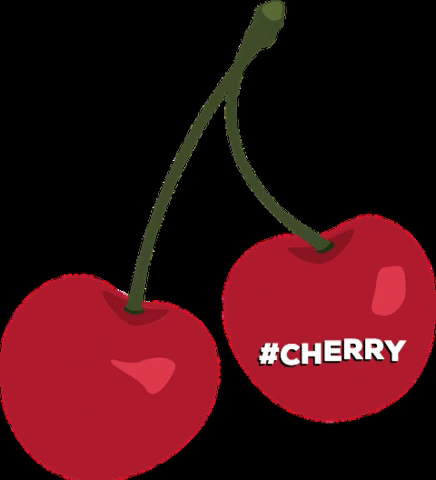Posted by: site admin @ 5:05 pm


TO

INSIGHT-NET- Online A1 (Awakened One) Tipiṭaka Research & Practice University
Online A1 (Awakened One) Tipiṭaka Research & Practice University
in Visual Format (FOA1TRPUVF)
on Free Online Electronic Visual Communication Course
from

jcs4ever@outlook.com
jchandra1942@icloud.com,
Classical Buddhism (Teachings of the Awakened One with Awareness) belong to the world, and everyone have exclusive rights:JC
is the most Positive Energy of informative and research oriented site propagating the teachings of the Awakened One with Awareness the Buddha and on Techno-Politico-Socio
Transformation and Economic Emancipation Movement followed by millions
of people all over the world in 105 Classical languages.
Rendering
exact translation as a lesson of this University in one’s mother tongue
to this Google Translation and propagation entitles to become a Stream
birds and created cages. Then All Humans will be automatically be
Friendly Benevolent Compassionate Awakened One from all Religions of the
world
Prabuddha Bharat “

 Universe!
Universe!

from Christianity Islam Buddhism Judaism Hinduism Taoism Atheism
Sikhism Mormonism Other major religions in the world

want: long life, health, beauty, power, riches, high birth, wisdom? Or
even some of these things? They do not appear by chance. It is not
someone’s luck that they are healthy, or another’s lack of it that he is
stupid. Though it may not be clear to us now, all such inequalities
among human beings (and all sorts of beings) come about because of the
kamma they have made individually. Each person reaps his own fruits. So
if one is touched by short life, sickliness, ugliness, insignificance,
poverty, low birth or stupidity and one does not like these things, no
need to just accept that that is the way it is. (…)

only the vegetables but fruits can be grown in containers as well. Here
are the 14 best fruits to grow in pots if you’re a beginner.
disease-free fruit plant from a reputed nursery or online and repot it
in a small to medium-sized pot (3-5 gallons), depending on the size of
the existing pot. Keep repotting the plant gradually into one or two
sizes bigger pots whenever it is outgrowing the current container. A
20-25 gallon size pot is ideal for a mature fruit tree in the container.
trees have adapted themselves well for container gardening. However, it
is a warm climate fruit, but gardeners in colder regions are also
successfully growing this tangy and sour fruit in pots. Almost all the
varieties are suitable, but there are some that grow best in specific
conditions. Read the information given in this article to grow your own
lemon tree.


are without a doubt one of the best fruits to grow in pots. The good
thing about growing strawberries in containers is they are easy to grow,
don’t require large pots or space, and you can even grow on your patio
or balcony. You can also try to grow strawberries in hot climates in
winters. Check out our guide on growing strawberries here.
are without a doubt one of the best fruits to grow in pots. The good
thing about growing strawberries in containers is they are easy to grow,
don’t require large pots or space, and you can even grow on your patio
or balcony. You can also try to grow strawberries in hot climates in
winters. Check out our guide on growing strawberries here.

apple trees are very suitable for growing in pots, and you can even
keep them on a balcony or small terrace. When growing an apple tree in
such a small space, it would be better to choose a self-fertile variety
so that you don’t need to grow more than one plant. All the other
requirements for growing apple tree in a pot is available here.

Pomegranate
is one of the juiciest and healthiest fruits and perhaps the easiest to
grow in pots. Why? Because this shrub has a shallow root system
compared to other large fruit trees. If you’ve grown citrus in a pot,
growing pomegranates in containers can’t be difficult for you too.
Moreover, pomegranate is cold hardy than a lemon tree. Learn how to grow
it in a pot
(https://balconygardenweb.com/how-to-grow-pomegranate-tree-in-pot-growing-pomegranates-in-containers/)
in this article.

USDA Zones: 8-10
As
figs are most suitable for warm temperate regions (USDA Zones 8-10), it
is best to grow a fig tree in a pot if you live in a climate where
winters are harsh or you don’t have enough space. Choose an appropriate
variety to grow in a pot and provide plenty of sun to your plant.
Regular pruning and fertilization are necessary.

Both
the nectarines and peaches are available in dwarf varieties. Most of
these dwarf varieties don’t exceed the height of 6-8 feet and are
self-fertile. Some dwarf peach varieties are “Bonanza,” “Golden Gem,”
“El Dorado,” “Garden Gold,” and “Southern Sweet.” Dwarf nectarine
varieties you can grow in pots are “Nectarcrest,” “Fantasia.”


USDA Zones: 4-9
Bush
cherry cultivars are suitable for container gardening. Cherries prefer a
mild climate and a little water as they dislike wet feet. However,
drought and fluctuating temperatures could damage the plant as well, but
it survives well in the cold. The cherry
(https://balconygardenweb.com/how-to-grow-barbados-cherry-care-and-growing-acerola-cherry/)
tree favors soil that is well-drained and composed of plenty of organic
matter.

USDA Zones: 9-11, *can be grown in cooler zones with care in winter
The
guava tree will delight you with its sweetly scented flowers, delicious
fruits, and beautiful tropical appearance. Guava loves the sunny and
warm exposure. It is a warm region plant but very much adaptable to
temperate climates with moderate winter. Learn how you can grow a guava
tree in a pot here
(https://balconygardenweb.com/growing-guava-in-pots-guava-tree-care/).


Watermelons
can be grown in pots–all they need is a good support system and
well-drained potting soil. Growing watermelon is similar to cucumber
(https://balconygardenweb.com/growing-cucumbers-vertically/). You can
find out all the information in our article
(https://balconygardenweb.com/growing-watermelon-in-containers-and-pots-vertically/).

Growing
banana in a pot is easy, and its lush green appearance can give any
place an exotic look and feel. Banana trees grow in tropical and
subtropical parts of the world, and therefore they love full sun, heat,
and humidity. However, there are cultivars available that are mildly
cold-hardy and suitable for warm temperate zones. Learn to grow it in a
pot here
(https://balconygardenweb.com/how-to-grow-banana-trees-growing-banana-trees-in-pots/).

plants are small and compact and never grow above 3-6 feet tall. Also,
these plants have shallow roots compared to other fruit-bearing plants
or trees, which is why it’s possible to grow them in pots. However,
pineapples require a consistently warm and humid climate to thrive, but
you can also grow them as a houseplant in colder zones, providing
several hours of direct sunlight daily.

are a bit tricky and unruly to grow in containers, but still,
everbearing varieties like “Heritage,” “Raspberry Shortcake,” and “Fall
Gold” are a good choice. All these varieties are self-fertile and easy
to grow in pots. Here’s a useful article on growing raspberry in
containers. Learn about eight berries you can grow in pots.

blueberries in pots is a good idea if the soil in your garden is not
acidic or you don’t have a garden. Providing a potting mix for Azaleas
and camellias or other acid-loving plants and a large pot is essential
so that your blueberry plant will grow easily and fruit happily for
years.

the oranges and citruses can be grown in pots as they are rather large
shrubs or small trees. If you live in a climate where winters are mild,
these fruits are straightforward to grow. However, you can still grow an
orange tree in a cold climate with care in winter. In pots, you can
grow calamondin, Buddha’s hand citron, clementines orange, etc.

Posted by: site admin @ 5:02 pm
Posted by: site admin @ 3:20 am


TO

INSIGHT-NET- Online A1 (Awakened One) Tipiṭaka Research & Practice University
Online A1 (Awakened One) Tipiṭaka Research & Practice University
in Visual Format (FOA1TRPUVF)
on Free Online Electronic Visual Communication Course
from

jcs4ever@outlook.com
jchandra1942@icloud.com,
Classical Buddhism (Teachings of the Awakened One with Awareness) belong to the world, and everyone have exclusive rights:JC
is the most Positive Energy of informative and research oriented site propagating the teachings of the Awakened One with Awareness the Buddha and on Techno-Politico-Socio
Transformation and Economic Emancipation Movement followed by millions
of people all over the world in 105 Classical languages.
Rendering
exact translation as a lesson of this University in one’s mother tongue
to this Google Translation and propagation entitles to become a Stream
birds and created cages. Then All Humans will be automatically be
Friendly Benevolent Compassionate Awakened One from all Religions of the
world
Prabuddha Bharat “

 Universe!
Universe!

from Christianity Islam Buddhism Judaism Hinduism Taoism Atheism
Sikhism Mormonism Other major religions in the world





examine and evaluate the available options to implement the goals of
laws and elected officials. The process is also used in the
administration of large organizations with complex policies.
examine and evaluate the available options to implement the goals of
laws and elected officials. The process is also used in the
administration of large organizations with complex policies.
ensure that a policy is fully analyzed, understood, and implemented
effectively, it is necessary to conduct a policy analysis.
his book, A Practical Guide for Policy Analysis: The Eightfold Path to
More Effective Problem Solving, Eugene Bardach, a professor at the
Goldman School of Public Policy at the University of California,
Berkeley, discusses an effective and efficient eight-step process to
follow when conducting a policy analysis. Below, I quickly outline each
step and provide a few insights and tools that will assist your
analysis. Steps 1 through 4 focuses on framing the analysis, while steps
5 through 8 emphasize doing the analysis.
the Problem: The problem should discuss the undesired gap between as-is
condition and to-be condition. The most important policy problems are
ill-structured, wicked problems that are difficult to resolve. It is
important to note that if you misdiagnose the problem, the policy
solution is likely to fail.
Some Evidence: To communicate the problem to the audience, you need to
be sure that there is evidence that the problem does indeed exist. This
evidence should be strong enough to make your audience care about the
problem and want to read further about solutions to address the problem.
the Alternatives: Alternatives should be ways to address or eliminate
the policy problem. In constructing alternatives, one can utilize
several techniques: (1) copy an existing policy without modification,
(2) copy an existing policy and modify it to fit your needs, (3) build a
policy utilizing generic tools, and (4) build a policy from scratch
with creativity and brainstorming. Alternatives should be tightly linked
to your problem definition, specific enough to be actionable, relevant
to your client’s resources, and materially different from one another.
You should try to include at least three to five alternatives and at
least one of these should be a “do-nothing” option. It is important not
to choose dummy alternatives or pick a favorite alternative, as this
will disrupt the analysis’s validity and reliability.
the Evaluation Criteria: Criteria are used to measure the outcomes and
impacts of each alternative. Bardach describes them as the “mental
standards for evaluating the results of action.” The criteria should be
measurable and quantifiable. There are several criteria commonly
utilized by policy analysts: (1) efficacy, (2) cost, (3) equity, (4)
administrative feasibility, (5) unintended consequences, (6)
sustainability, and (7) political feasibility. The criteria will enable
you to evaluation each alternative across the same metrics in order to
ultimately determine the best policy option. Therefore, criteria should
be chosen based on outcomes and impacts policy leaders would like to see
from a policy option.
the Outcomes: Evaluate each policy alternative based on the criteria.
Sometimes, this process will enable you to clearly eliminate policy
alternatives that do not produce desired outcomes and impacts. However,
it is often difficult to pinpoint the most effective policy alternative
from this process.
the Trade-Offs: As a clear policy “winner” is often not produced from
the above analysis, it is important to look at trade-offs between the
policy alternatives to identify the best alternative. This includes
conducting a cost-benefit analysis, cost-effectiveness analysis, or
multi-attribute analysis. Ultimately, you should be able to produce 2-3
crystal clear sentences on what your clients gets and gives up from
choosing a certain policy alternative.
Your Story: In recounting the process to the client, it is important to
clearly tell the story; trade detail for brevity. You should consider
three types of audiences, (1) those that will spend 30 seconds reading
your analysis, (2) those that will spend 3 minutes, and (3) those that
will spend 30 minutes. Your analysis should provide enough information
to satisfy all three types of readers and enable them to understand your
process and ultimate recommendation.
following these steps, you will ensure that you effectively and
efficiently assess a policy before implementation or making alterations.
This will guarantee that policy leaders understand all of the potential
positive and negative outcomes from a specific policy choice and
action.
the 2008 global financial crisis, the Obama administration introduced
the biggest changes to financial regulation in the US since the Great
Depression of the 1930s.
annual Comprehensive Capital Analysis and Review is designed to assess,
regulate, and supervise large banks and financial institutions. It
checks that they have enough capital, are stable and that plans to
distribute capital, such as dividends, are practical.
works alongside Dodd-Frank Act supervisory stress testing, which was
introduced as part of the Dodd-Frank Wall Street Reform and Consumer
Protection Act 2010.
investment analysis is a budgeting procedure that companies and
government agencies use to assess the potential profitability of a
long-term investment. Capital investment analysis assesses long-term
investments, which might include fixed assets such as equipment,
machinery, or real estate. The goal of this process is to identify the
option that can yield the highest return on invested capital. Businesses
may use various techniques to perform capital investment analysis,
which involve calculating the expected value of future cash flows from
the project, the cost of financing, and the risk-return of the project.
investment analysis is a budgeting tool that companies and governments
use to forecast the return on a long-term investment.
investments are risky because they involve significant, up-front
expenditures on assets intended for many years of service, and that will
take a long time to pay for themselves. One of the basic requirements
of a firm evaluating a capital project is an investment return greater
than the hurdle rate, or required rate of return, for shareholders of
the firm.
of the most common metrics for capital investment analysis is the net
present value (NPV) model, which determines how much the expected
revenue from a project–called future cash flows–are worth in today’s
dollars. Net present value shows whether the future cash flows or
revenue are enough to cover the initial investment of the project and
any other cash outflows.
NPV calculation discounts–or reduces–the expected future cash flows by a
specific rate to arrive at their value in today’s terms. After
subtracting the initial investment cost from the present value of the
expected cash flows, a project manager can determine whether the project
is worth pursuing. If the NPV is a positive number, it means it’s worth
pursuing while a negative NPV means the future cash flows aren’t
generating enough return to be worth it and cover the initial
investment.
net present value (NPV) measures the difference between the present
value of the project’s cash inflows and the present value of any costs
or cash outflows. For example, a company might compare the returns from a
project to the cost of financing that project. The cost of financing
would be the hurdle rate used to calculate the present value of the cash
flows. A project wouldn’t be worth pursuing if the expected cash flows
aren’t enough to cover the hurdle rate and the initial investment cost.
cash flow (DCF) is similar to net present value but also slightly
different. NPV calculates the present value of cash flows and subtracts
the initial investment. DCF analysis is essentially a component of the
NPV calculation since it’s the process of using a discount rate or an
alternative rate of return to measure whether the future cash flows make
the investment worth it or not.
is popular with investments that are expected to generate a set rate of
return each year in the future. It doesn’t take into account any
start-up costs but merely measures whether the rate of return on the
expected future cash flows is worth investing in based on the discount
rate used in the formula.
DCF analysis, the discount rate is typically the rate of return that’s
considered risk-free and represents the alternative investment of the
project. For example, a U.S. Treasury bond is typically considered
risk-free since Treasuries are backed by the U.S. government. If a
Treasury paid 2% interest, the project would need to earn more than
2%–or the discount rate–to be worth the risk.
present value is the value of the expected cash flows in today’s
dollars by discounting or subtracting the discount rate. If the result
or present value of the cash flows is greater than the rate of return
from the discount rate, the investment is worth pursuing.
investment decisions are not made lightly. Analytical models are easy
to set up. The inputs, however, drive model results; therefore,
reasonable assumptions are critical for determining whether a
contemplated investment goes forward. Cash flows beyond, say, three or
five years can be difficult to project. The discount rate, when applied
to years far into the future, has a substantial impact on the present
value calculation.
analysis, whereby varying inputs are plugged into the model to gauge
changes in value, should be performed. But even then, unexpected events
can upset the best-designed model with the most reasonable assumptions,
in which case the modeler may decide to integrate contingency factors
into the analysis.
a trading account in under 5 minutes and join 900,000 others globally
trading gold, silver, copper and 300+ other CFD products over assets
like forex, indices, and shares with an award-winning broker. Trade gold
from 0.0 spreads on Vantage’s RAW account, and access free education
and trading tools with 24/5 phone support. Learn more about trading with
Vantage and get started.
or commonly social welfare, is a type of government support intended to
ensure that members of a society can meet basic human needs such as
food and shelter.[1] Social security may either be synonymous with
welfare,[a] or refer specifically to social insurance programs which
provide support only to those who have previously contributed (e.g. most
pension systems), as opposed to social assistance programs which
provide support on the basis of need alone (e.g. most disability
benefits).[6][7] The International Labour Organization defines social
security as covering support for those in old age, support for the
maintenance of children, medical treatment, parental and sick leave,
unemployment and disability benefits, and support for sufferers of
occupational injury.
broadly, welfare may also encompass efforts to provide a basic level of
well-being through free or subsidized social services such as
healthcare, education, infrastructure, vocational training, and public
housing.[10][11] In a welfare state, the state assumes responsibility
for the health, education, infrastructure and welfare of society,
providing a range of social services such as those described.[11]
historians view systems of codified almsgiving, like the zakat policy
of the 7th century (634 CE) Rashidun caliph Umar, as early examples of
universal government welfare.[12] The first welfare state was Imperial
Germany (1871–1918), where the Bismarck government introduced social
security in 1889.[13] In the early 20th century, the United Kingdom
introduced social security around 1913, and adopted the welfare state
with the National Insurance Act 1946, during the Attlee government
(1945–51).[11] In the countries of western Europe, Australia, and New
Zealand, social welfare is mainly provided by the government out of the
national tax revenues, and to a lesser extent by non-government
organizations (NGOs), and charities (social and religious).[11] A right
to social security and an adequate standard of living is asserted in
Articles 22 and 25 of the Universal Declaration of Human Rights.[6][b]
the Roman Empire, the first emperor Augustus provided the Cura Annonae
or grain dole for citizens who could not afford to buy food every month.
Social welfare was enlarged by the Emperor Trajan.[15] Trajan’s program
brought acclaim from many, including Pliny the Younger.[16] The Song
dynasty government (960 CE) supported multiple programs which could be
classified as social welfare, including the establishment of retirement
homes, public clinics, and paupers’ graveyards. According to economist
Robert Henry Nelson, “The medieval Roman Catholic Church operated a
far-reaching and comprehensive welfare system for the poor …”[17][18]
From the 14th century onward the governments of the Italian city-states
began to partner with the church to provide welfare and education to the
lower classes.[19] In later Protestant European nations such as the
Dutch Republic welfare was managed by local guilds until the abolition
of the guild system in the early 19th century.[20][21] In the free
imperial cities of the Holy Roman Empire the city governments in cities
like Nuremberg could take control of the collection and distribution of
public welfare.[22][23]
7th century caliph Umar implemented a form of zakat, one of the Five
Pillars of Islam, as a codified universal social security tax.[24]
Traditionally estimated at 2.5% of an individual’s assets, government
zakat funds were distributed to various groups of Muslims, including
impoverished people and those in severe debt.[25][26] The collection of
zakat increased during the Umayyad and Abbasid caliphates, though the
zakat system was frequently inefficient and corrupt; Islamic jurists
often instructed Muslims to distribute money to the needy directly
instead to maximize its impact.[27]
in Jewish tradition, charity (represented by tzedakah) is a matter of
religious obligation rather than benevolence. Contemporary charity is
regarded as a continuation of the Biblical Maaser Ani, or poor-tithe, as
well as Biblical practices, such as permitting the poor to glean the
corners of a field and harvest during the Shmita (Sabbatical year).
is relatively little statistical data on transfer payments before the
High Middle Ages. In the medieval period and until the Industrial
Revolution, the function of welfare payments in Europe was achieved
through private giving or charity, through numerous confraternities and
activities of different religious orders. Early welfare programs in
Europe included the English Poor Law of 1601, which gave parishes the
responsibility for providing welfare payments to the poor.[28] This
system was substantially modified by the 19th-century Poor Law Amendment
Act, which introduced the system of workhouses.
was predominantly in the late 19th and early 20th centuries that an
organized system of state welfare provision was introduced in many
countries. Otto von Bismarck, Chancellor of Germany, introduced one of
the first welfare systems for the working classes.[29] In Great Britain
the Liberal government of Henry Campbell-Bannerman and David Lloyd
George introduced the National Insurance system in 1911,[30] a system
later expanded by Clement Attlee.
welfare states include Germany, France, the Netherlands,[31] as well as
the Nordic countries, such as Iceland, Sweden, Norway, Denmark, and
Finland[32] which employ a system known as the Nordic model.
Esping-Andersen classified the most developed welfare state systems into
three categories; Social Democratic, Conservative, and Liberal.[33]
report published by the ILO in 2014 estimated that only 27% of the
world’s population has access to comprehensive social security.[34] The
World Bank’s 2019 World Development Report argues that the traditional
payroll-based model of many kinds of social insurance are “increasingly
challenged by working arrangements outside standard employment
contracts”.
can take a variety of forms, such as monetary payments, subsidies and
vouchers, or housing assistance. Welfare systems differ from country to
country, but welfare is commonly provided to individuals who are
unemployed, those with illness or disability, the elderly, those with
dependent children, and veterans. Programs may have a variety of
conditions for a person to receive welfare:
insurance, state-sponsored programs based partly on individual
contributions towards benefits such as healthcare, unemployment
payments, and old-age pensions.
benefits, financial assistance provided for those who are unable to
cover basic needs, such as food, clothing and housing, due to poverty or
lack of income because of unemployment, sickness, disability, or caring
for children. While assistance is often in the form of financial
payments, those eligible for social welfare can usually access health
and educational services free of charge. The amount of support is enough
to cover basic needs and eligibility is often subject to a
comprehensive and complex assessment of an applicant’s social and
financial situation. See also Income Support.
benefits. Several countries have special schemes, administered with no
requirement for contributions and no means test, for people in certain
categories of need, such as veterans of armed forces, people with
disabilities, and very old people.
or categorical benefits, also known as demogrants. These are
non-contributory benefits given for whole sections of the population
without a means test, such as family allowances or the public pension in
New Zealand (known as New Zealand Superannuation). See also the Alaska
Permanent Fund Dividend.
developing countries, formal social security arrangements are often
absent for the vast majority of the working population, in part due to
reliance on the informal economy. Additionally, the state’s capacity to
reach people may be limited because of its limited infrastructure and
resources. In this context, social protection is often referred to
instead of social security, encompassing a broader set of means, such as
labour market intervention and local community-based programs, to
alleviate poverty and provide security against things like unemployment.
to 1900 in Australia, charitable assistance from benevolent societies,
sometimes with financial contributions from the authorities, was the
primary means of relief for people not able to support themselves.[38]
The 1890s economic depression and the rise of the trade unions and the
Labor parties during this period led to a movement for welfare
reform.[39]
1900, the states of New South Wales and Victoria enacted legislation
introducing non-contributory pensions for those aged 65 and over.
Queensland legislated a similar system in 1907 before the Australian
labor Commonwealth government led by Andrew Fisher introduced a national
aged pension under the Invalid and Old-Aged Pensions Act 1908. A
national invalid disability pension was started in 1910, and a national
maternity allowance was introduced in 1912.[38][40]
the Second World War, Australia under a labor government created a
welfare state by enacting national schemes for: child endowment in 1941
(superseding the 1927 New South Wales scheme); a widows’ pension in 1942
(superseding the New South Wales 1926 scheme); a wife’s allowance in
1943; additional allowances for the children of pensioners in 1943; and
unemployment, sickness, and special benefits in 1945 (superseding the
Queensland 1923 scheme).[38][40]
has a welfare state in the European tradition; however, it is not
referred to as “welfare”, but rather as “social programs”. In Canada,
“welfare” usually refers specifically to direct payments to poor
individuals (as in the American usage) and not to healthcare and
education spending (as in the European usage).[41]
Canadian social safety net covers a broad spectrum of programs, and
because Canada is a federation, many are run by the provinces. Canada
has a wide range of government transfer payments to individuals, which
totaled $145 billion in 2006.[42] Only social programs that direct funds
to individuals are included in that cost; programs such as medicare and
public education are additional costs.
speaking, before the Great Depression, most social services were
provided by religious charities and other private groups. Changing
government policy between the 1930s and 1960s saw the emergence of a
welfare state, similar to many Western European countries. Most programs
from that era are still in use, although many were scaled back during
the 1990s as government priorities shifted towards reducing debt and
deficits.
welfare in Czech Republic is outlined in a series of social policies,
as is the tradition in Europe. Their goal is primarily preventing, but
also mitigating social situations individuals may find themselves in
through their lives. The social welfare is provided through social
(including pension) insurance, sick insurance (not to be confused with
health insurance), public policy related to unemployment and low income
benefits, which are financed through the government budget, and health
insurance, which is financed through an array of insurance
companies.[43] Therefore, the social welfare program is usually
separated into three categories: health insurance, social insurance and
social benefits support.
insurance is a type of statutory insurance that provides citizens for a
future unforeseen social event, such as unemployment or disability that
would prevent an individual from working, but also planned retirement.
Social insurance is therefore compulsory for all self-employed
individuals, employees and employers operating in the Czech Republic and
gets deducted from a salary in a similar manner to taxes. This
insurance serves to finance unemployment support, disability benefits
and covers a part of an employer’s salary in cases of long-term illness
that obstructs them from participating in the workforce.
sickness insurance system is intended for gainfully employed
individuals who, in cases of short-term social events, are provided with
health insurance benefits. These are provided through financial
benefits. Sickness insurance participants are employees and
self-employed individuals. Employees are compulsorily covered by
sickness insurance, unlike the self-employed, whose sickness insurance
is voluntary (and there is no penalisation for opting out of the
insurance). It is calculated through a series of reductions of an
assessment base. Employees’ sickness insurance provides 4 types of
sickness benefits: benefits for caring for a family member, pregnancy
and maternity allowance, maternity allowance.[44] It is standard to go
on paid maternity leave in the Czech Republic, which ordinarily lasts 28
weeks. This period is prolonged to 37 weeks in the case of twins.
Furthermore, there are special circumstances, such as the birth of a
disabled child, when this period is extended even more.[45] The
beginning of maternity leave is usually 6 weeks before expected due
date, and after maternity leave, it is possible to request further
parental leave, which is optional and can be performed by either parent,
regardless of gender. Parental leave lasts upto 4 years, depending on
individual preferences.
insurance is part of social insurance, in addition to sickness
insurance and serves as a contribution to the state employment policy.
It is a premium for old age retirement, disability retirement or
benefits in the event of the death of the primary provider in a
household. Participation in pension insurance is mandatory for
economically active individuals. For those on various forms of benefits,
or currently registered as a care provider, this insurance is provided
by the state. The basic pension insurance provides, in time old-age
pension (includes regular, proportional, early and other variants of
old-age pension), disability benefits, widower’s and orphan’s pension.
Pension insurance is applied for at the District Social Security
Administration in the applicant’s place of permanent residence. They can
apply in person or by proxy, on the basis of a notarized power of
attorney. The amount of the pension consists of two component - the
basic acreage and the percentage acreage.[46]
form of pension is the disability pension. This is provided to
individuals that are unable to participate in the workforce to the same
degree as their able-bodied counterparts, due to their disability
contributing to the decline of their ability to work (be it partially or
entirely). There is a distinction between disability pension for
individuals with first, second and third degree disability. The amount
of the pension depends on the rate of decline of the person’s ability to
work, with the categories being divided between the 1st degree (a
decrease of 35-49%), the 2nd degree (a decrease of 50-69%), and the 3rd
degree (a decrease of 70% and above).[47]
there is a so-called widow’s / widower’s pension. Provided to widowed
individuals from the Czech pension system, its aim is to compensate
households for losing income that they would in this situation be
lacking. The widowed individual is entitled to a pension from a deceased
person who has received an old-age or disability pension or has
fulfilled the statutory condition on the required insurance period at
the date of death. The amount of the assessment is 10% of the average
wage and the amount of the percentage assessment is 50% of the
percentage of the old-age or disability pension to which the deceased
was entitled at the time of their death.[48]
welfare is handled by the state through a series of policies (and the
like) that seeks to provide welfare services to citizens, hence the term
welfare state. This refers not only to social benefits, but also
tax-funded education, public child care, medical care, etc. A number of
these services are not provided by the state directly, but administered
by municipalities, regions or private providers through outsourcing.
This sometimes gives a source of tension between the state and
municipalities, as there is not always consistency between the promises
of welfare provided by the state (i.e. parliament) and local perception
of what it would cost to fulfill these promises.
Central Government of India’s social programmes and welfare
expenditures are a substantial portion of the official budget, and state
and local governments play roles in developing and implementing social
security policies. Additional welfare measure systems are also uniquely
operated by various state governments. The government uses the unique
identity number (Aadhar) that every Indian possesses to distribute
welfare measures in India. As of 2020, the government’s expenditure on
social programme and welfare (direct cash transfers, financial
inclusion, benefits, health and other insurances, subsidies, free school
meals, rural employment guarantee), was approximately fourteen lakh
crore rupees ($192 billion), which was 7.3% of gross domestic product
(GDP).
articles: Poverty in France, Social protection in France, French Fifth
Risk Plan, Revenu de solidarité active, and Revenu minimum d’insertion
is a strong value of the French Social Protection system. The first
article of the French Code of Social Security describes the principle of
solidarity. Solidarity is commonly comprehended in relations of similar
work, shared responsibility and common risks. Existing solidarities in
France caused the expansion of health and social security.[49][50][51]
welfare state has a long tradition in Germany dating back to the
industrial revolution. Due to the pressure of the workers’ movement in
the late 19th century, Reichskanzler Otto von Bismarck introduced the
first rudimentary state social insurance scheme. Under Adolf Hitler, the
National Socialist Program stated “We demand an expansion on a large
scale of old age welfare.” Today, the social protection of all its
citizens is considered a central pillar of German national policy. 27.6
percent of Germany’s GDP is channeled into an all-embracing system of
health, pension, accident, longterm care and unemployment insurance,
compared to 16.2 percent in the US. In addition, there are tax-financed
services such as child benefits (Kindergeld, beginning at €192 per month
for the first and second child, €198 for the third and €223 for each
child thereafter, until they attain 25 years or receive their first
professional qualification),[52] and basic provisions for those unable
to work or anyone with an income below the poverty line.[53]
2005, reception of full unemployment pay (60–67% of the previous net
salary) has been restricted to 12 months in general and 18 months for
those over 55. This is now followed by (usually much lower)
Arbeitslosengeld II (ALG II) or Sozialhilfe, which is independent of
previous employment (Hartz IV concept).
of 2022, under ALG II, single adults receive up to €449 per month plus
the cost of ‘adequate’ housing. ALG II can also be paid partially to
employed persons to supplement a low work income.
Italian welfare state’s foundations were laid along the lines of the
corporatist-conservative model, or of its Mediterranean
variant.[citation needed] Later, in the 1960s and 1970s, increases in
public spending and a major focus on universality brought it on the same
path as social-democratic systems. In 1978, a universalistic welfare
model was introduced in Italy, offering a number of universal and free
services such as a National Health Fund.[54]
welfare, assistance for the ill or otherwise disabled and for the old,
has long been provided in Japan by both the government and private
companies. Beginning in the 1920s, the government enacted a series of
welfare programs, based mainly on European models, to provide medical
care and financial support. During the postwar period, a comprehensive
system of social security was gradually established.[55][56]
1980s marked a change in the structure of Latin American social
protection programs. Social protection embraces three major areas:
social insurance, financed by workers and employers; social assistance
to the population’s poorest, financed by the state; and labor market
regulations to protect worker rights.[57] Although diverse, recent Latin
American social policy has tended to concentrate on social assistance.
1980s, had a significant effect on social protection policies. Prior to
the 1980s, most Latin American countries focused on social insurance
policies involving formal sector workers, assuming that the informal
sector would disappear with economic development. The economic crisis of
the 1980s and the liberalization of the labor market led to a growing
informal sector and a rapid increase in poverty and inequality. Latin
American countries did not have the institutions and funds to properly
handle such a crisis, both due to the structure of the social security
system, and to the previously implemented structural adjustment policies
(SAPs) that had decreased the size of the state.
Welfare programs have integrated the multidimensional, social risk
management, and capabilities approaches into poverty alleviation. They
focus on income transfers and service provisions while aiming to
alleviate both long- and short-term poverty through, among other things,
education, health, security, and housing. Unlike previous programs that
targeted the working class, new programs have successfully focused on
locating and targeting the very poorest.
impacts of social assistance programs vary between countries, and many
programs have yet to be fully evaluated. According to Barrientos and
Santibanez, the programs have been more successful in increasing
investment in human capital than in bringing households above the
poverty line. Challenges still exist, including the extreme inequality
levels and the mass scale of poverty; locating a financial basis for
programs; and deciding on exit strategies or on the long-term
establishment of programs.[57]
economic crisis of the 1980s led to a shift in social policies, as
understandings of poverty and social programs evolved (24). New, mostly
short-term programs emerged. These include:[58]
cash transfer (CCT) combined with service provisions. Transfer cash
directly to households, most often through the women of the household,
if certain conditions are met (e.g. children’s school attendance or
doctor visits) (10). Providing free schooling or healthcare is often not
sufficient, because there is an opportunity cost for the parents in,
for example, sending children to school (lost labor power), or in paying
for the transportation costs of getting to a health clinic.
the poorest. Recent programs have been more successful than past ones
in targeting the poorest. Previous programs often targeted the working
class.
Zealand is often regarded as having one of the first comprehensive
welfare systems in the world. During the 1890s a Liberal government
adopted many social programmes to help the poor who had suffered from a
long economic depression in the 1880s. One of the most far reaching was
the passing of tax legislation that made it difficult for wealthy sheep
farmers to hold onto their large land holdings. This and the invention
of refrigeration led to a farming revolution where many sheep farms were
broken up and sold to become smaller dairy farms. This enabled
thousands of new farmers to buy land and develop a new and vigorous
industry that has become the backbone of New Zealand’s economy to this
day. This liberal tradition flourished with increased enfranchisement
for indigenous Maori in the 1880s and women. Pensions for the elderly,
the poor and war casualties followed, with State-run schools, hospitals
and subsidized medical and dental care. By 1960, New Zealand was able to
afford one of the best-developed and most comprehensive welfare systems
in the world, supported by a well-developed and stable economy.
Philippines, social welfare is divided into two. The first one is
called Social Security System (SSS) and the other one is called
Government Service Insurance System (GSIS). Social Security System or
SSS is a social insurance program for workers in private sector.
Individuals who are self-employed or not working can also apply to be
protected under SSS programme. SSS provide benefits for unemployment,
death, funeral, maternity leave, disabilities and many more. Members of
SSS who experienced accident or death due to work activity, can also
claim for double compensation under the Employees’ Compensation (EC)
programme. SSS also allows its members to apply for salary loans, based
on their monthly salary and calamity loan, if their place is declared as
“state of calamity” by the government. SSS also have two voluntary
saving programs, PESO Fund and Flexi Fund to help prepare their members
with a stable income for retirement. Government servants are protected
under the Government Service Insurance System or GSIS. Just like SSS,
GSIS also provide their members with retirement benefits, life insurance
and employee compensation.[citation needed]
pension payments are financed through an 18.5% pension tax on all taxed
incomes in the country, which comes partly from a tax category called a
public pension fee (7% on gross income), and 30% of a tax category
called employer fees on salaries (which is 33% on a netted income).
Since January 2001, the 18.5% is divided in two parts: 16% goes to
current payments, and 2.5% goes into individual retirement accounts,
which were introduced in 2001. Money saved and invested in government
funds, and IRAs for future pension costs, are roughly five times annual
government pension expenses (725/150).
Swedish welfare more broadly, it emerges as highly rated in many
standard international comparisons of welfare or well-being (e.g. World
Economic Forum 2020).[60] However, some Nordic-based welfare and gender
researchers have argued that such assessments, based on conventional
welfare/well-being criteria, may to some extent over-privilege Sweden
(and other Nordic countries) in terms of, for instance, gender and
racial equality. For example, they suggest that if one takes a broader
perspective on well-being incorporating issues associated with bodily
integrity or bodily citizenship (Pringle 2011),[61] then some major
forms of men’s domination and/or white privilege can be seen to still
stubbornly persist in the Nordic countries, e.g. business, violence to
women, sexual violence to children, the military, academia and religion
(Hearn and Pringle 2006; Hearn et al. 2018; Pringle 2016).[62][63][64]
United Kingdom has a long history of welfare, notably including the
English Poor laws which date back to 1536. After various reforms to the
program, which involved workhouses, it was eventually abolished and
replaced with a modern system by laws such as the National Assistance
Act 1948.
more recent times, comparing the Cameron–Clegg coalition’s austerity
measures with the Opposition’s, the Financial Times commentator Martin
Wolf commented that the “big shift from Labour … is the cuts in
welfare benefits.”[66] The government’s austerity programme, which
involves reduction in government policy, has been linked to a rise in
food banks. A study published in the British Medical Journal in 2015
found that each one percentage point increase in the rate of Jobseeker’s
Allowance claimants sanctioned was associated with a 0.09 percentage
point rise in food bank use.[67] The austerity programme has faced
opposition from disability rights groups for disproportionately
affecting disabled people. The “bedroom tax” is an austerity measure
that has attracted particular criticism, with activists arguing that
two-thirds of council houses affected by the policy are occupied with a
person with a disability.[68]
the United States, depending on the context, the term “welfare” can be
used to refer to means-tested cash benefits, especially the Aid to
Families with Dependent Children (AFDC) program and its successor, the
Temporary Assistance for Needy Families block grants, or it can be used
to refer to all means-tested programs that help individuals or families
meet basic needs, including, for example, health care through Medicaid,
Supplemental Security Income (SSI) benefits and food and nutrition
programs (SNAP). It can also include social insurance programs such as
unemployment insurance, Social Security, and Medicare.
(originally called Aid to Dependent Children) was created during the
Great Depression to alleviate the burden of poverty for families with
children and allow widowed mothers to maintain their households. The New
Deal employment program such as the Works Progress Administration
primarily served men. Prior to the New Deal, anti-poverty programs were
primarily operated by private charities or state or local governments;
however, these programs were overwhelmed by the depth of need during the
Depression.[69] The United States has no national program of cash
assistance for non-disabled poor individuals who are not raising
children.
early in the year 1965, the news media conveyed the idea that only
whites lived in poverty, but then Blacks were presented more often than
Whites in this plight.[70] Some of the influences on this shift may have
been the civil rights movement and urban riots from the mid 60s.
Welfare had by then shifted from being a White issue to being a Black
issue and during this time frame the war on poverty had already
begun.[70] Subsequently, news media portrayed stereotypes of Blacks as
lazy and undeserving and as welfare queens. These shifts in media
presentation didn’t necessarily reflect a decrease in the percentage of
the population living in poverty.[70]
chart showing the overall decline of average monthly welfare benefits
(AFDC then TANF) per recipient 1962–2006 (in 2006 dollars).[71]
1996, the Personal Responsibility and Work Opportunity Reconciliation
Act changed the structure of Welfare payments and added new criteria to
states that received Welfare funding. After reforms that President
Clinton said would “end Welfare as we know it”,[72] amounts from the
federal government were given out in a flat rate per state based on
population.[73] Each state must meet certain criteria to ensure
recipients are being encouraged to work themselves out of Welfare. The
new program is called Temporary Assistance for Needy Families
(TANF).[74][75] It encourages states to require some sort of employment
search in exchange for providing funds to individuals, and imposes a
five-year lifetime limit on cash assistance.[72][74][76] In FY 2010,
31.8% of TANF families were white, 31.9% were African-American, and
30.0% were Hispanic.[75]
to the U.S. Census Bureau data released 13 September 2011, the nation’s
poverty rate rose to 15.1% (46.2 million) in 2010,[77] up from 14.3%
(approximately 43.6 million) in 2009 and to its highest level since
1993. In 2008, 13.2% (39.8 million) Americans lived in relative
poverty.[78]
a 2011 op-ed in Forbes, Peter Ferrara stated that, “The best estimate
of the cost of the 185 federal means tested Welfare programs for 2010
for the federal government alone is nearly $700 billion, up a third
since 2008, according to the Heritage Foundation. Counting state
spending, total Welfare spending for 2010 reached nearly $900 billion,
up nearly one-fourth since 2008 (24.3%).”[79] California, with 12% of
the U.S. population, has one-third of the nation’s welfare
recipients.[80]
FY 2011, federal spending on means-tested welfare, plus state
contributions to federal programs, reached $927 billion per year.
Roughly half went to families with children, most of which are headed by
a single parent.[81]
United States has also typically relied on charitable giving through
non-profit agencies and fundraising instead of direct monetary
assistance from the government itself. According to Giving USA,
Americans gave $358.38 billion to charity in 2014. This is rewarded by
the United States government through tax credits for individuals and
companies that are not typically seen in other countries. Since these
per capita charity sums are much higher than in all other countries,
this means that private people and companies have a strong say in how
social assistance is carried out. This means that public funds in the
form of unpaid taxes are distributed according to less professional,
less objective, and less unbiased criteria than in all other countries.
welfare-to-work intervention programme is unlikely to have any impacts
on the mental and physical health of lone parents and children. Even
when the employment and income rates were higher in this group of
people, the poverty rate was high which could lead to persistently high
rates of depression whether they were in the programme or not.[82]
transfers can be either conditional or unconditional. Conditionalities
are sometimes criticized as being paternalistic and unnecessary, and
research in different contexts shows enforcing conditionalities can
result in additional burdens for recipients and social service
providers.[83]
2008 study by welfare economist and Brown University Professor Allan M.
Feldman[84] suggests that welfare can achieve both competitive
equilibrium and Pareto efficiency in the market,[85] although different
points of Pareto efficiency are more fair to some than others.[86]
proximity and concentration of the beneficiaries (this affects the ease
by which beneficiaries can organize to protect a social program)
or commonly social welfare, is a type of government support intended to
ensure that members of a society can meet basic human needs such as
food and shelter.[1] Social security may either be synonymous with
welfare,[a] or refer specifically to social insurance programs which
provide support…


Posted by: site admin @ 3:11 am
